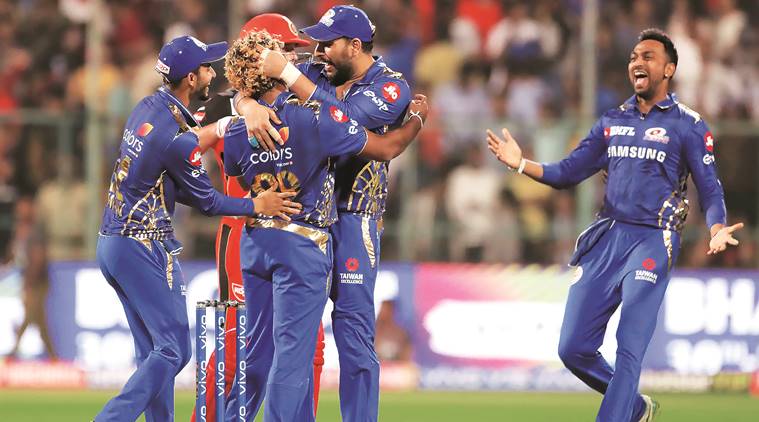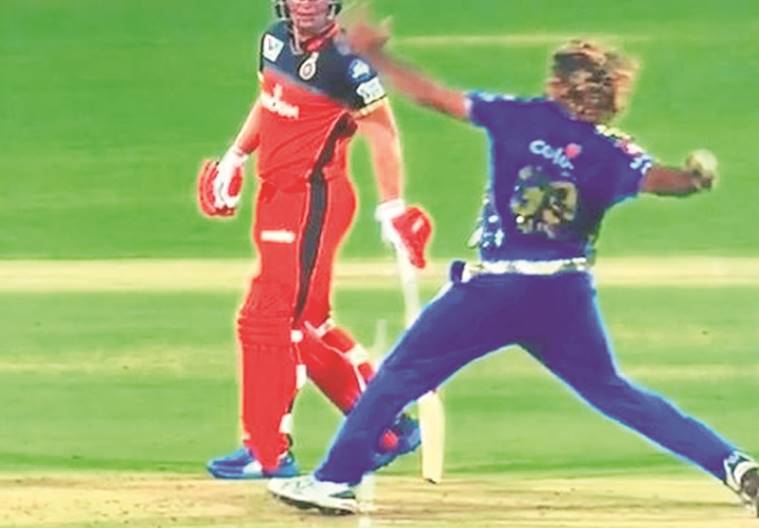
In 2019, in the era of Decision Review System, can cricket be left to throw up such situations as we saw in the IPL game between Bangalore and Mumbai on Thursday? With Bangalore needing six runs off the last ball to level the game, Lasith Malinga bowled a near-perfect yorker that the batsman, Shivam Dube, could only dig out to long on for a single. But as the players were walking off the field, the big screen showed Malinga had overstepped, something the umpire S Ravi failed to notice. Virat Kohli was livid. “The umpires should have their eyes open. That was a big no-ball. That is a ridiculous call,” the Bangalore skipper fumed.
It drew criticism even from the winning captain Rohit Sharma, who was shrewd enough to add that a ball in the previous over was wrongly called a wide. Though on that occasion, it was CK Nandan who made the decision.

While it is unfair to single out Ravi, it’s not a state secret that he has had problems with identifying trespassing of the popping crease for a while now. Last year, in a Test between Sri Lanka and England, he missed 13 no-balls, 40%, bowled by the spinner Sadakan in one session. It could be said that the unorthodox action of Sandakan made it difficult to get a good look at the front foot — Ben Stokes’s dismissal was overturned twice after replays showed it was a no-ball (and only those ball that yielded wickets were checked for overstepping). It leads to more pressing questions about what can be done about the no-ball issue.
It was in this context that Jos Buttler made the above-quoted suggestion.
The “watch” option was, in fact, tried in an international ODI series between Pakistan and England in 2016. The job of identifying no-balls was given to the TV umpire, who would buzz the on-field umpire through their watch, when bowlers overstepped. In that series, 8 no-balls were called by the TV umpire.
“The aim of the trial was to call no-balls more accurately than the human eye can at the non-striker’s end… trying to address a difficult issue in a way that has minimal impact on the game,” the ICC’s head general manager of cricket then Geoff Allardice was quoted as saying.
It’s something that the ICC should perhaps try out more and see if they can do something about it to act as a tool to help the on-field umpires.
In February 2016, in a Test between New Zealand and Australia in Wellington, the umpire Richard Illingworth no-balled a Doug Bracewell delivery that had bowled Adam Vogues, who was on 7 then, and went on to make a match-defining 239. Replays revealed that it wasn’t a no-ball, but the aftermath is certainly relevant to our case now.
The match referee Chris Broad later revealed that the umpire Richard was “distraught” at his mistake.
“But umpires, particularly on the elite panel have a great ability to be able to overcome that feeling and get on with the game… Nothing can be done about it. The problem is that when an umpire calls a no-ball, you can’t change that decision because under the laws a batsman may change his shot when the no-ball is called. It was called — that’s the end of the matter…I’m constantly amazed at how the umpires, when they do make their occasional errors, are able to recover from it.”
Broad then threw up some more trivia: “Richard is a Yorkshireman, he shrugs his shoulders and gets on with it.”
What about umpires who aren’t Yorkshiremen? In these times where people love to outrage, the pressure on these umpires has ratcheted up insanely.
Degree of difficulty
That leads to the crux of it: How difficult it is to call a no-ball?
The umpire has to look first down — in theory he has to check the back foot first to see if the bowler has landed his back foot or some part of it outside or on the crease. Once he gets past that, he then has to assess whether some part of the front foot is behind — on land or in the air — the front line. He then has to jerk up his eye and check out a range of events — from lbw to edges to wides. Sometimes, Mankading in between.
Often, the bowler’s back foot almost obscures the front foot during the release time, seen more with the open-chested bowlers. England’s bowler Steve Finn had conceded once: “I know, from a personal point of view, that the umpire can’t see my front foot when I land because of the way my hip and back knee rotate through.”
Then there are bowlers who rush through the crease, like Wasim Akram used to, who make the job that much harder. There are who come close to the stumps who create other problems.
The methods too have changed. Earlier generation would recall Swaroop Krishnan almost stooping to the stump-level and get a closer look at the crease. This would help him in lbw decisions as well as he could judge the bounce more accurately. But that has changed. Now the understanding is that it’s better to keep the head still, just move the eyes down and up, and stand a short distance behind the stumps.
The Mankading case proves how difficult the umpiring job is. That MCC, the body that frames the Laws, took two days to arrive at a conclusion that varied from their statement the previous day says a lot. A day after they said R Ashwin’s Mankading was legal, they made a U-turn a day later. “Having extensively reviewed the incident again, and after further reflection we don’t think it was within the spirit of the game,” MCC’s manager of Laws Fraser Stewart was quoted by the Daily Telegraph newspaper in England. Why make the rules so convoluted that it takes two days and extensive viewing to arrive at a decision?
With so much happening after the ball releases, it’s perhaps time then to let the umpire focus on the business end of the event. What this affects, in theory, are the times when the batsman hears the call of no-ball and can use it to hit out. It’s still debatable how many times the batsmen use the call and change their shots. The other option is to still make the umpire go through the process as before — check no-ball and then jerk up his eye, but still have the third umpire watch. But the problem with it is that the umpire isn’t let free to solely focus on the main event at the other end.